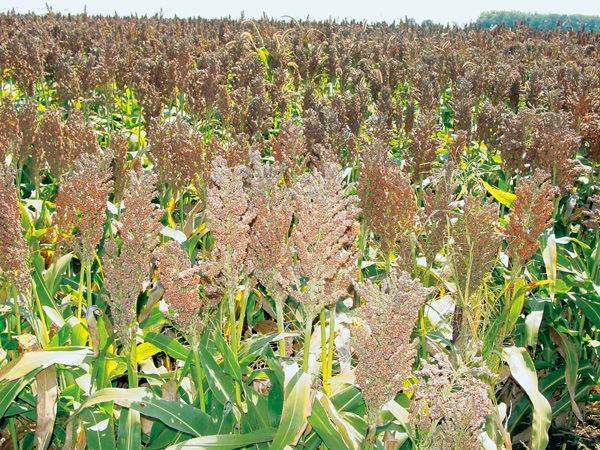
If someone connected to agriculture played word association and “ethanol” was the first word chosen, chances are good that the first word to come to mind would be “corn.” Corn and ethanol have gone together for quite some time.
However, it’s not the only commodity that ethanol relies on for its production needs. Sorghum is becoming a valuable input to the ethanol industry. In turn, that means the ethanol industry is becoming increasingly important for sorghum growers. John Duff, strategic business director for the National Sorghum Producers, said sorghum has always been in the mix for the modern ethanol industry.
“Over the history of the ethanol industry,” Duff said, “during the ’70s and ’80s, a number of barnyard ethanol plants were built in the Upper Midwest, many of which were in Minnesota. What a lot of folks may not realize is there were also a lot of barnyard ethanol plants in places like Kansas and eastern New Mexico. Those were predominantly sorghum ethanol plants.”
He said sorghum has been a key part of ethanol plants for a long time. The largest amounts of sorghum usage in ethanol plants really began in the mid-2000s. The balance sheet for sorghum usage early on wasn’t huge, but in recent years usage has grown to about 120 million bushels of a 300- to 400-million-bushel crop. It’s a significant amount of the overall crop and usage has hovered near that level for the past five years.
Duff said the process of converting sorghum into ethanol is basically the same as converting corn into ethanol. For many years, the rule of thumb was two changes had to be made to an ethanol plant to run sorghum through it.
“Those changes to ethanol plants don’t have to be made anymore because of the way the process has involved,” Duff said. “At one time, it was ‘change a screen and change an enzyme’ and you’re there. These days a lot of plants are running different screens and the different enzyme anyway. That means they don’t need to make any changes at all to run sorghum through their plant.”
Just how far has the process come? This may come as a surprise but some ethanol plants in Kansas store corn and sorghum in the same bin. Statistically speaking, Duff said the amount of starch in each commodity is basically the same. They also have similar amounts of fat and protein levels. There are minor differences but the two perform the same. Both are widely available too.
“The sorghum belt stretches from central South Dakota all the way down to southern Texas,” he said. “About 25 percent of our crop is grown south of San Antonio. Kansas is the largest sorghum producing state in the country. About 80 percent of the nation’s sorghum crop is producing in both Kansas and Texas.
“South Dakota is also a top five producing sorghum state,” he added.
“Historically, Nebraska was a very important state for sorghum production.
It’s smaller in terms of overall sorghum production but no less important. Most Nebraska sorghum is grown in parts of the state with more arid conditions, like those in western Nebraska. In fact, the chairman of the Board of Directors for the National Sorghum Producers is Don Bloss of Pawnee City, Nebraska.”
Duff said more ethanol demand strengthened prices for the commodity. While it did increase the price for the commodity, it also made sorghum more competitive relative to corn on basis. For farmers looking at basis bids for corn and sorghum and are able to get similar yields from the two, especially in arid western areas, that basis difference can be the difference between growing corn and sorghum.
“Proportionately, sorghum growers tend to be bigger than corn growers, especially in arid western areas,” he said, “and they have to be bigger in those types of conditions to keep fixed costs down. The larger size helps them to continue to be competitive in those challenging areas to grow their crops.”
Sorghum prefers night and daytime temperatures similar to those that soybeans and corn thrive in. The key difference for sorghum is it can take a little more heat, especially in the day time. It maintains pollen viability a little better, so from a drought and heat perspective, Duff said the crop performs very well in more arid areas, especially relative to corn.
Source: Sorghum, corn can co-exist

